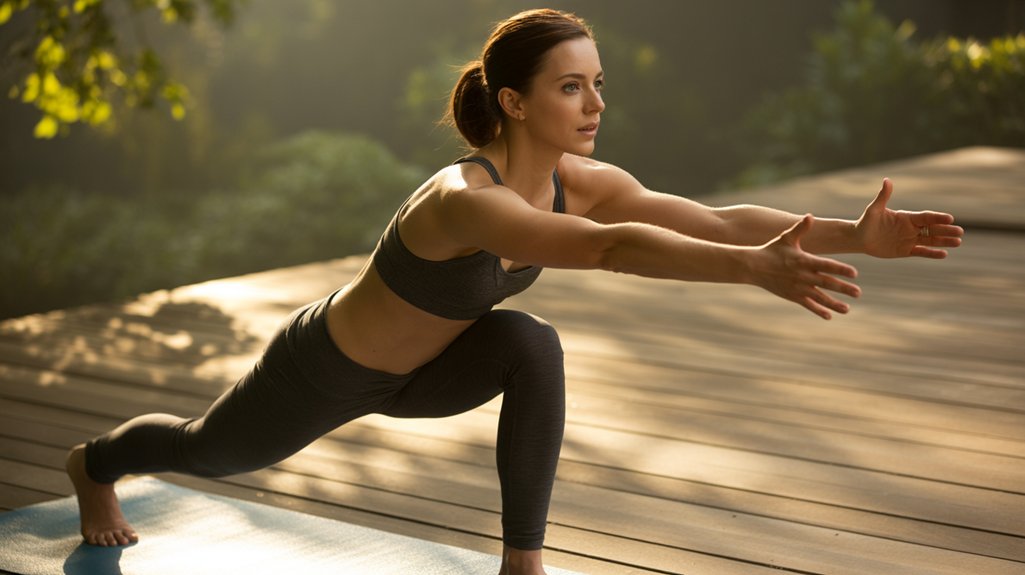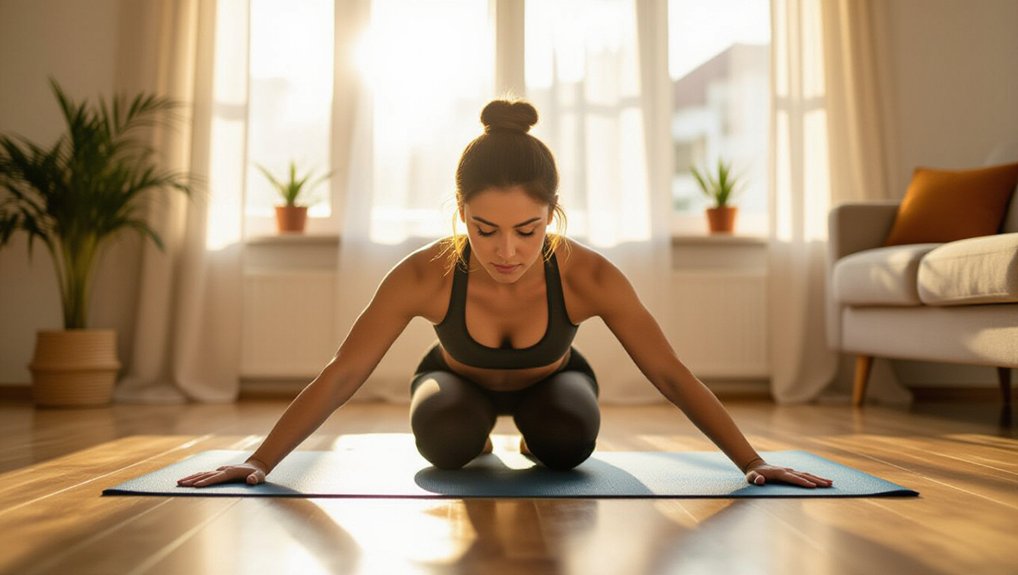You’ve been sitting at your desk for hours, and your body’s sending clear signals – stiff neck, tight hips, aching shoulders. These aren’t just minor inconveniences; they’re your body’s way of asking for movement. A quick mobility routine can transform how you feel in mere minutes, but most people approach flexibility work all wrong. They either skip it entirely or waste time on ineffective stretches that don’t target the real problem areas where tension accumulates throughout your workday.
Benefits of Daily Mobility Work
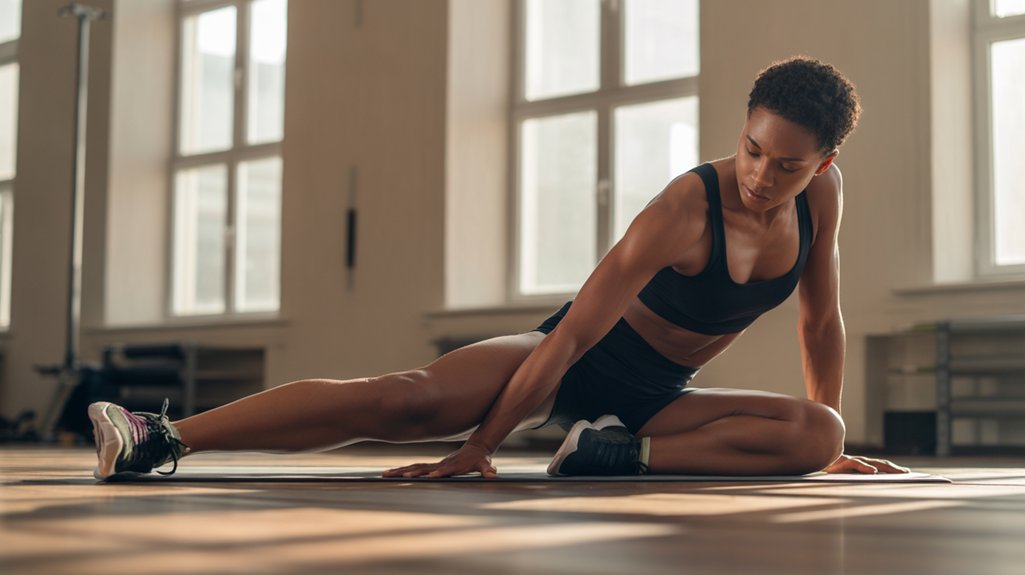
Consistency transforms your body’s movement patterns in remarkable ways. When you commit to daily mobility work, you’ll notice increased range of motion within just two weeks.
Your joints become more fluid, muscles release chronic tension, and your posture naturally improves throughout the day. Daily mobility practice reduces injury risk by preparing your body for movement demands.
You’ll experience less stiffness when waking up and decreased muscle soreness after workouts. Your athletic performance improves as restricted movement patterns unlock, allowing for more efficient force production.
Mental benefits accompany physical changes. You’ll develop better body awareness and movement quality. The routine becomes a moving meditation, reducing stress while building the foundation for pain-free movement that lasts throughout your lifetime.
Equipment-Free Movements for Busy Schedules
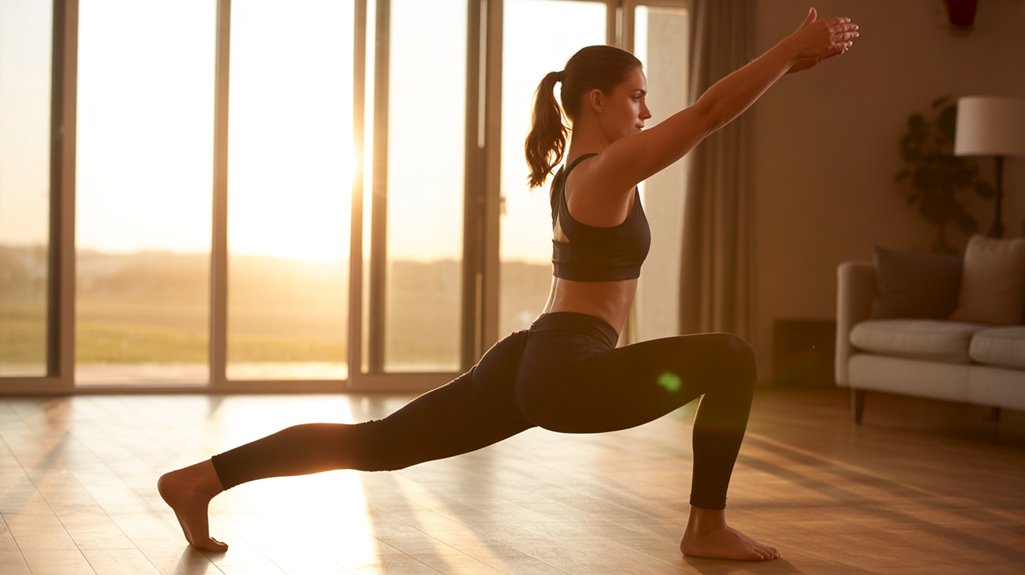
Your body becomes your only tool with these equipment-free movements that fit seamlessly into any schedule.
You can perform neck rolls while waiting for coffee to brew, targeting cervical spine stiffness. Shoulder circles work perfectly during conference calls, loosening tight upper back muscles. Cat-cow stretches require just floor space and take thirty seconds to mobilize your entire spine.
You’ll find ankle circles effective under your desk, improving circulation and joint range. Hip circles while standing activate your core and release tension from prolonged sitting. Arm swings across your chest open tight pectorals without equipment.
These movements don’t require gym memberships or special gear. You can complete most exercises in work clothes, making consistency achievable regardless of your location or schedule constraints.
Hip Opening Sequence for Desk Workers
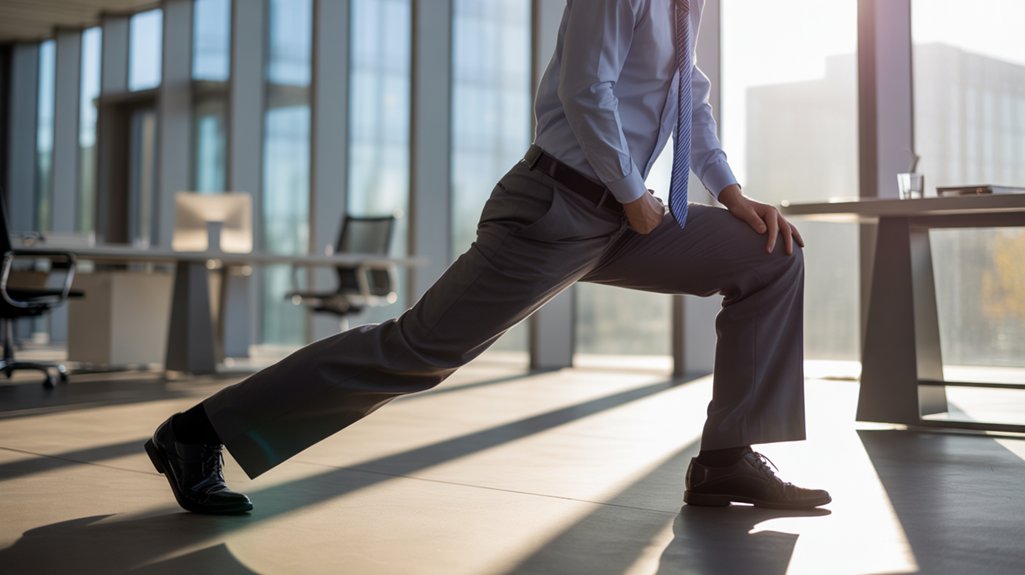
Since prolonged sitting creates chronic hip flexor tightness and glute weakness, this targeted sequence addresses the most problematic areas for desk workers.
Start with the 90/90 stretch, sitting with both legs bent at ninety degrees, leaning forward over your front leg for thirty seconds each side. Move into a low lunge, dropping your back knee and pushing your hips forward to stretch hip flexors.
Add clamshells lying on your side, lifting your top knee while keeping feet together to activate glutes.
Finish with figure-four stretches, placing one ankle over the opposite knee and pulling your thigh toward your chest.
Complete this sequence twice daily for optimal results.
Shoulder and Upper Back Release Techniques
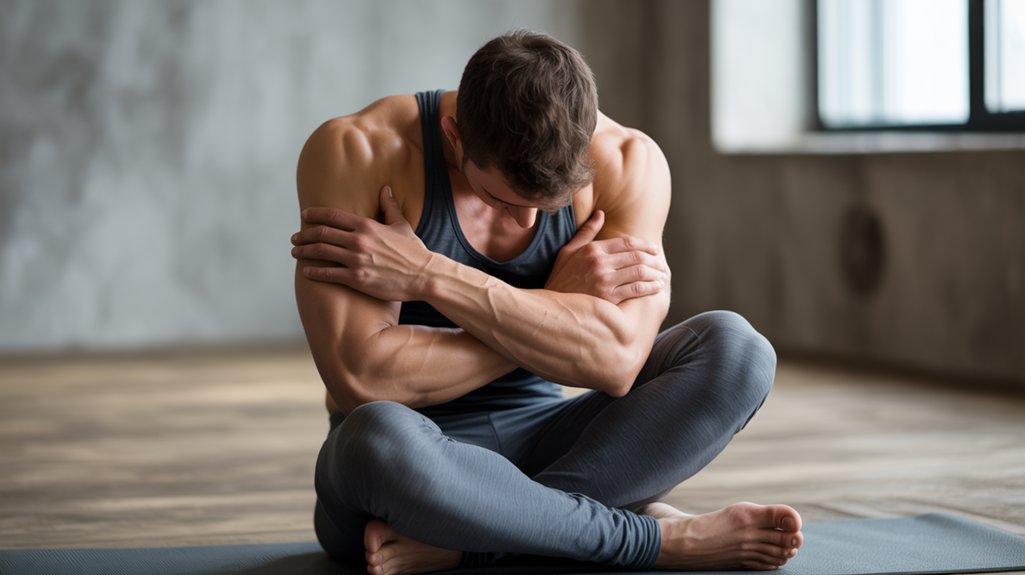
While desk work wreaks havoc on your hips, it’s equally destructive to your shoulders and upper back, creating forward head posture and rounded shoulders that compress nerves and restrict breathing.
These targeted techniques will reverse the damage and restore proper alignment.
Start with doorway chest stretches, placing your forearm against the frame and stepping forward to open tight pectorals. Hold for 30 seconds each arm.
Next, perform cross-body shoulder stretches by pulling your arm across your chest, targeting the posterior deltoids.
For your upper back, try wall slides by pressing your back against a wall and sliding your arms up and down.
Cat-cow stretches on hands and knees mobilize your thoracic spine.
Finish with neck rolls and chin tucks to counteract forward head posture.
Ankle Mobility Exercises for Better Movement
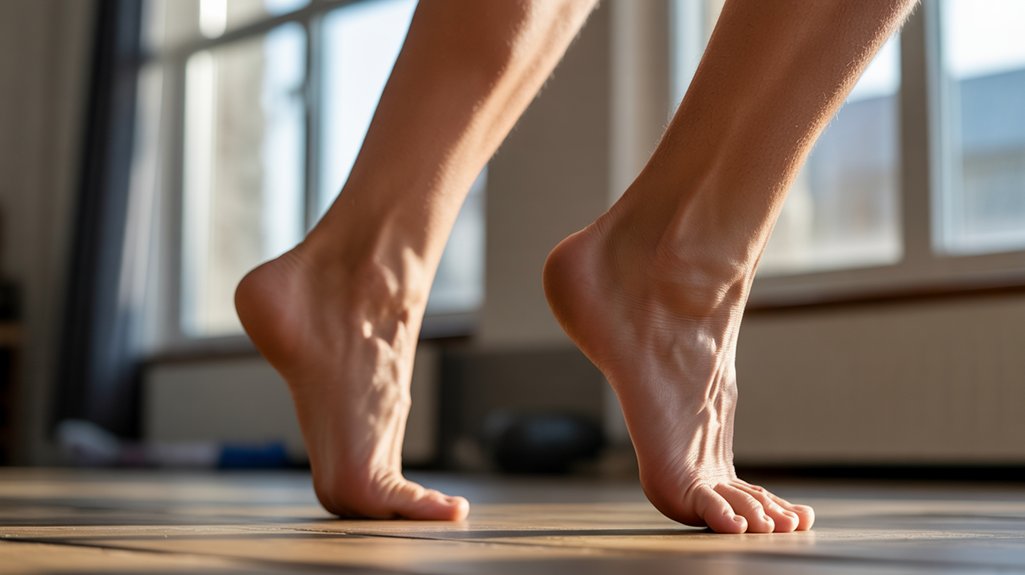
Although often overlooked, your ankles serve as the foundation for every movement pattern in your body. Restricted ankle mobility creates a domino effect of compensations that lead to knee pain, hip dysfunction, and lower back issues.
Start with wall ankle stretches by placing your hands against a wall and stepping one foot back. Press your heel down while leaning forward to stretch your calf and improve dorsiflexion. Hold for thirty seconds each leg.
Next, perform ankle circles while seated or standing. Lift one foot and rotate your ankle clockwise, then counterclockwise for ten repetitions each direction.
Finish with calf raises to strengthen the muscles supporting your ankle joint. Rise onto your toes, pause briefly, then lower slowly. Complete fifteen controlled repetitions to enhance stability and mobility.
Complete 10-Minute Routine Breakdown
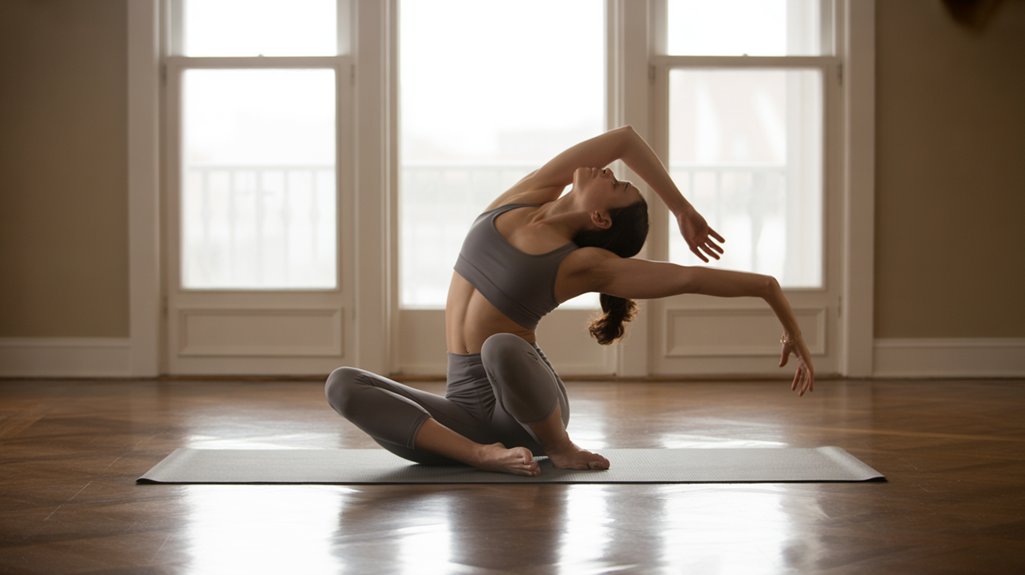
Because consistency matters more than perfection, this ten-minute routine combines all the essential mobility exercises into a streamlined sequence you can perform daily.
Start with two minutes of neck rolls and shoulder circles to release upper body tension.
Move into three minutes of thoracic spine rotations and cat-cow stretches for your mid-back flexibility.
Dedicate three minutes to hip circles, 90/90 stretches, and leg swings to open tight hips.
Finish with two minutes of ankle circles and calf stretches to improve lower body movement.
You’ll perform each exercise for 30-60 seconds with smooth, controlled movements.
This routine targets every major joint system, preparing your body for daily activities while building long-term flexibility and reducing stiffness.
Modification Options for All Fitness Levels
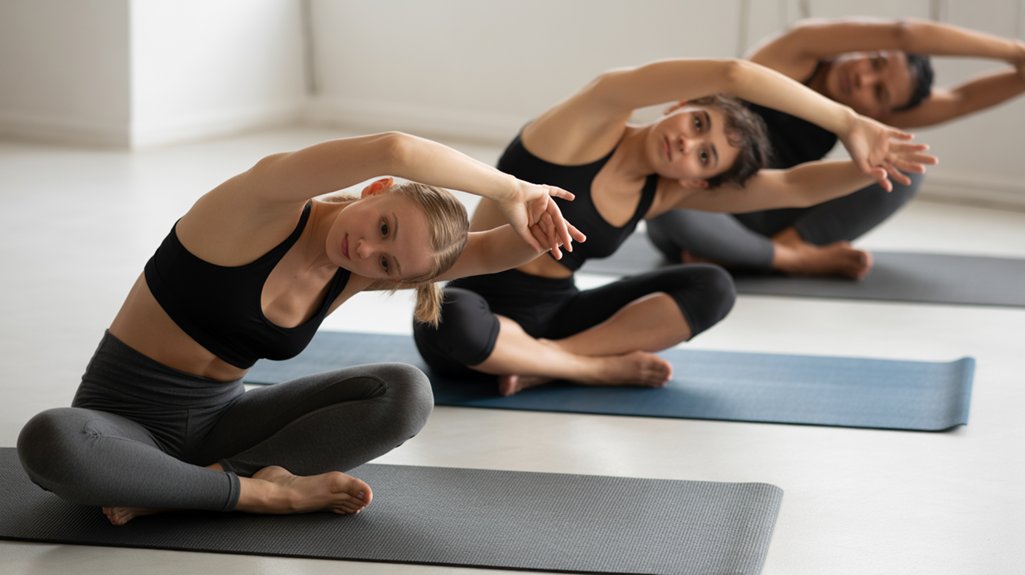
Since everyone starts their flexibility journey from a different place, you’ll need to adjust these movements based on your current mobility level and any physical limitations.
Beginner modifications: Hold stretches for shorter durations (15-20 seconds instead of 30). Use wall support for balance during standing movements. Bend your knees during forward folds and reduce range of motion for hip circles.
Intermediate adjustments: Maintain standard hold times but focus on controlled movements. Add gentle pulses at the end of static stretches to deepen the stretch safely.
Advanced progressions: Extend hold times to 45 seconds. Add resistance bands for dynamic movements. Incorporate deeper ranges of motion and combine movements into flowing sequences.
Always listen to your body and stop if you feel pain rather than mild discomfort.
Tips for Building Consistency Throughout Summer
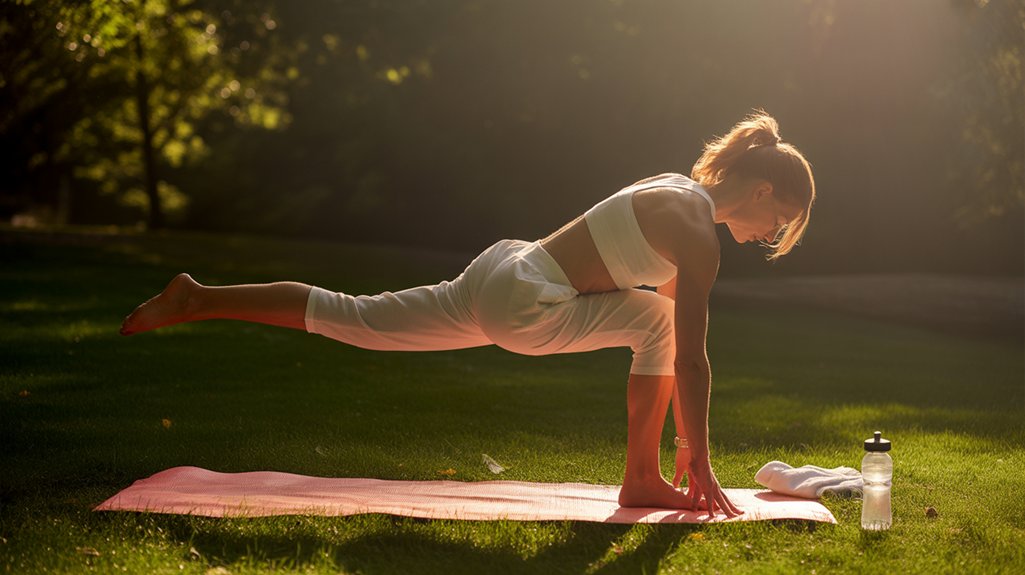
While summer’s longer days and vacation schedules can disrupt your routine, they also create perfect opportunities to establish lasting mobility habits.
Set a consistent time that works with your summer schedule—early morning before activities heat up or evening wind-downs work well.
Pack portable routines for travel by focusing on exercises requiring no equipment.
Link your mobility work to existing summer habits like post-beach stretching or pre-barbecue preparation.
Track your progress with a simple calendar or phone app to maintain motivation.
Start small with just five minutes daily rather than ambitious sessions you’ll skip.
Use outdoor spaces when possible—fresh air makes movement more enjoyable and sustainable throughout the season.
Conclusion
You’ve now equipped yourself with a complete mobility toolkit that requires no equipment and minimal time. Don’t let another day pass sitting in stiffness – you’ll notice immediate improvements in how your body feels and moves. Start with just five minutes tomorrow morning, and you’ll build momentum naturally. Your joints will thank you, your posture will improve, and you’ll carry this energy throughout your entire summer. Make mobility your non-negotiable daily habit.
